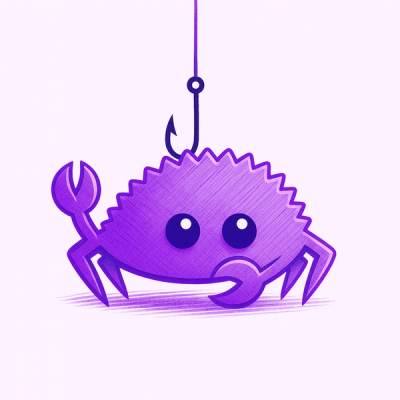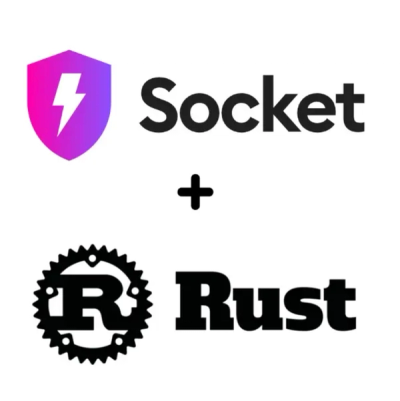
Security News
Crates.io Users Targeted by Phishing Emails
The Rust Security Response WG is warning of phishing emails from rustfoundation.dev targeting crates.io users.
@aws-c2a/rules
Advanced tools
The C2A rules language lets you classify infrastructure changes according to risk profile.
These classifications will then be applied when you run aws-c2a diff or use
the CDK Pipelines step.
Changes can be classified along to 2 different axes:
Rules operate on a [graph](https://en.wikipedia.org/wiki/Graph_(discrete_mathematics) that represent the difference between two CloudFormation templates, and contains a representation of all the changes introduced by the difference between the two templates.
Each rule is written in a custom JSON syntax, and performs a graph query, looking up vertices and and traversing edges in the graph, to find the appropriate change vertices and attach a desired classification to them.
Here's an example of a very simple rule:
{
// Give the rule a useful description
"description": "Allow all insert operations",
// Bind identifiers. In this case, let the identifier 'insertChange' go over
// 'change' nodes that represent an INSERT.
"let": {
"insertChange": { "change": {"type": "INSERT" } }
},
// Classify the change vertices found by 'insertChange' as 'low risk'
// and 'automatically approved'.
"effect": {
"target": "insertChange",
"risk": "low", // or "high"
"action": "approve" // or "reject"
}
}
This is a very simple rule that approves and marks all component operations of
type INSERT as a low risk change. It is broken down below:
let
The let field defines the bindings for a given rule. In this case, the identifier,
insertChange, is bound to the query that matches all change objects of type INSERT.
The let field acts as a scope for the rule, where each binding is executed in order,
allowing you to chain bindings in a sequential manner.
effect
The effect field defines the outcome of any objects, identified as target, returned
from the queries. In this case, the target is insertChange, which corresponds to all
insert operations. The risk and automatic approval behavior for these changes are
specified in the fields risk and action respectively.
Every rule has a scope; defined by the bindings that are declared in the let field.
You can utilize the notion of scope to chain rules together in a nested style.
{
"description": "CLOUDFRONT",
"let": { "cf": { "Resource": "AWS::CloudFront::Distribution" } },
"then": [
{
"description": "Cloudfront Distributions origin changes are risky",
"let": {
"change": { "change": {}, "where": "change appliesTo cf.Properties.DistributionConfig.Origins" }
},
"effect": {
"risk": "high"
}
},
{
"description": "Cloudfront Distributions origin protocol security can increase",
"let": {
"change": { "change": {}, "where": [
"change appliesTo cf.Properties.DistributionConfig.Origins.*.OriginProtocolPolicy",
"change.old == 'http-only'",
"change.new == 'https-only'"
]
}
},
"effect": {
"risk": "low",
"action": "approve"
}
}
]
}
then
In this rule, the then field is used to apply sub-rules that have access to the bindings
declared in their parent scope.
where
The where field defines conditions that the query must satisfy. These conditions include,
but are not limited to, checking if a change applies to a given object (Component or Property)
with the operator appliesTo; comparing old and new values of changes to properties with
the .old accessor and == operator.
Component and Property objects allow accessing their inner properties by using the dot (".") notation. For example
component.someArray.*.propertywill correspond to all values of key "property" in elements of array "someArray" inside "component".
FAQs
The rules language and processor for CDK Change Analyzer
The npm package @aws-c2a/rules receives a total of 3 weekly downloads. As such, @aws-c2a/rules popularity was classified as not popular.
We found that @aws-c2a/rules demonstrated a not healthy version release cadence and project activity because the last version was released a year ago. It has 1 open source maintainer collaborating on the project.
Did you know?

Socket for GitHub automatically highlights issues in each pull request and monitors the health of all your open source dependencies. Discover the contents of your packages and block harmful activity before you install or update your dependencies.

Security News
The Rust Security Response WG is warning of phishing emails from rustfoundation.dev targeting crates.io users.

Product
Socket now lets you customize pull request alert headers, helping security teams share clear guidance right in PRs to speed reviews and reduce back-and-forth.

Product
Socket's Rust support is moving to Beta: all users can scan Cargo projects and generate SBOMs, including Cargo.toml-only crates, with Rust-aware supply chain checks.